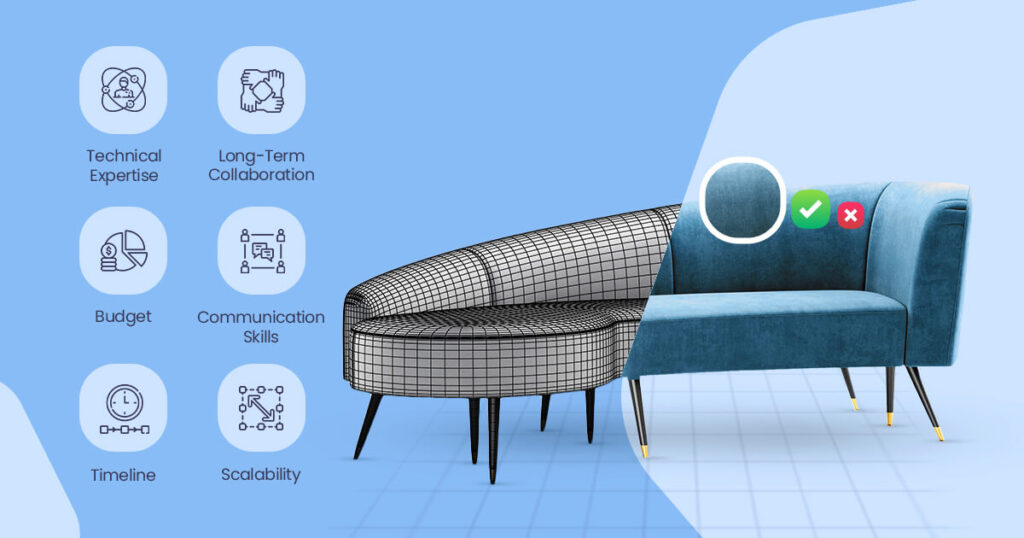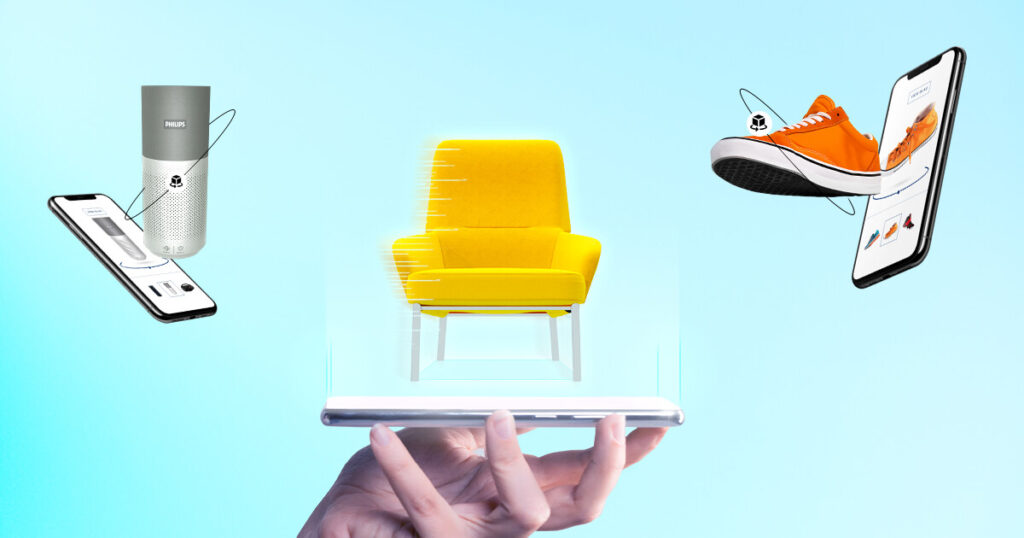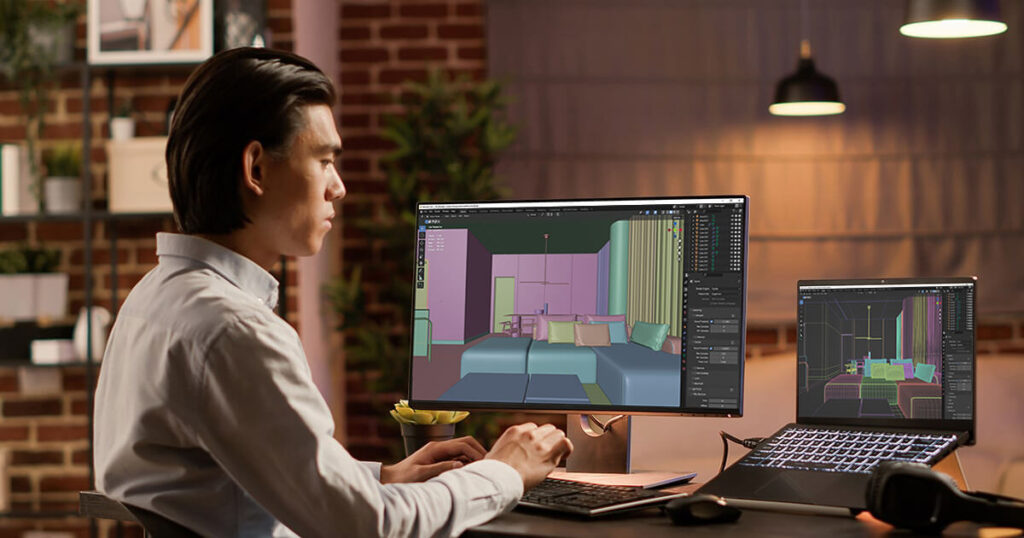The best program for 3D modeling has revolutionized the furniture industry. It is becoming a powerful marketing tool rather than merely a tool for designers. Furniture businesses may promote their products in the best possible light by turning abstract concepts into lifelike digital representations. 3D modelling expedites the design process, lowers expenses, and improves the consumer experience from the first concept to the finished product.
But it can be confusing to select the best instrument because there are so many possibilities for programs. Rendering quality, material libraries, customization possibilities, tool integration, and user friendliness are important factors to take into account.
Which 3D modeling program is consequently most effective for furniture brands? There is no one-size-fits-all solution, but some well-liked option are Blender which is well-known for easy to learn.
The perfect software eventually comes down to your team’s level of experience, financial restrictions, and future requirements. Try out some demos or free trials to see which one is the best fit. Recall that buying the appropriate 3D modelling software can dramatically alter your furniture brand.
Key Features to Consider in the Best Program for 3D Modeling Software
Selecting the best 3D modeling program for your furnishings brand requires careful consideration of different key features:
User Interface and Ease of Use
A workflow system that is efficient requires an interface that is easy to use. Designers should be able to concentrate on creativity rather than technical difficulties with software that is straightforward.
Compatibility with Other Design Tools
For faster operations, seamless interaction with current design software—such as CAD or graphic design programs—is essential. Smooth data flow and the avoidance of potential compatibility problems are ensured via compatibility.
Rendering Capabilities and Visual Quality
Reproductions of a high caliber are necessary to produce visually captivating and realistic images. To properly depict the furniture, the software should generate photographs with realistic textures, lighting, and materials.
Customization Options for Furniture Design
It’s critical to be pliable when customizing furniture sketches. A diversity of instruments for crafting one-of-a-kind motives should be included in the software, ranging from modifying dimensions to testing out various materials and finishes.
Cost and Licensing Considerations
Software choice is typically affected by economic restrictions. Take into account the buying cost, permit fees, and continuing upkeep prices. Determine whether the software’s features are in line with your company’s purpose and warrant the cost.
Furniture businesses can choose the best program for 3D modelling software that best meets their objectives and allows them to produce eye-catching pictures by carefully weighing these elements.
Top 3D Modeling Programs for Furniture Brands
Furniture businesses must use the best 3D modelling software package in order to realize their concepts. Here is a quick rundown of some well-liked choices:
Sketch Up is very simple to usage and great for easy furniture plan. Beginners can effortlessly use it because to its extensive model collection and user-friendly interface. But for more intricate or sophisticated models, it might not be sufficient.
AutoCAD can also work in 3D, although it is largely a 2D draft tool. It can have a steep learning curve, especially for furniture design, even though it is accurate for technical drawings.
Blender is an open-source, free project that offers strong modelling ability. Because of its high learning curve and complication, it is best suited for more seasoned users.
Fusion 360 integrates manufacturing and design skills. Although its cloud-based features and parametric modelling are useful, the complexity may not be suitable for all furniture designs.
In the end, the model choice will depend on the capacity of your team, the demands of the program, and your financial plan. Consider things like interoperability with other programs, customization choices, rendering quality, and pleasure of use.
Case Studies of Furniture Brands Using the Best Program for 3D Modeling
In order to comprehend the furniture industry’s response to 3D modelling, let us look at some successful case studies:
Examples of Successful Furniture Brands Utilizing 3D Modeling
- IKEA: IKEA, which is renowned for its creative thinking, makes considerable use of 3D modelling to produce interactive product visualizations on its website that let users see how furniture fits in various room configurations.
- Herman Miller: This luxury furniture company uses 3D modelling to improve client experience through product development, marketing, and virtual showrooms.
- West Elm: West Elm uses three-dimensional (3D) technology to produce immersive online shopping experiences that let shoppers see things in their homes.
Discussion of the Impact on Design Processes and Customer Engagement
This company has simplified their design procedure by applying 3D models for fast prototypes and iterations. This lowers the price of bodily prototypes and speeds the time to market. In addition, by proposing interactive product knowledge, 3D visualizations have greatly improved consumer tendencies.
Insights into How These Brands Have Improved Their Market Presence
This furniture occupation has set itself apart from the competition by providing an additional interesting and educational online purchase experience thanks to 3D modelling. As a result, there has been a rise in sales as well as brand attachment and customer satisfaction. More importantly, 3D modelling has made it easier for designers, producers, and merchants to collaborate successfully, which has optimized the stock fetters as a whole.
Following up on the last topic, furniture businesses can learn a great deal about the possible advantages of using 3D modelling in their operations by examining these case studies.
Conclusion
Choosing the best program for 3D modeling software is central for furniture brands. It can enhance product visualization, expedite design processes, and in the end increase sales. The model software should complement a company’s team knowledge, financial constraints, and unique requirements.
Furniture occupations should choose a 3D modelling platform only after carefully analyzing their special needs. Take into account elements like team efficiency equality, the required degree of customization, design complications, and economic restrictions. Brands can maximize the potential of the software and make well-informed judgments by comprehending these needs.
3D modelling has a very bright future in the furniture business. We may anticipate much more lifelike and engaging visualizations as technology develops. Customers will be able to digitally arrange furniture in their homes thanks to the widespread use of virtual and augmented reality experiences. Mass customization and 3D printing are some new trends that will change the market.
Furniture manufacturers may stay ahead of the curve, improve customer happiness, and open up new avenues for innovation by using the best program for 3D modeling.






